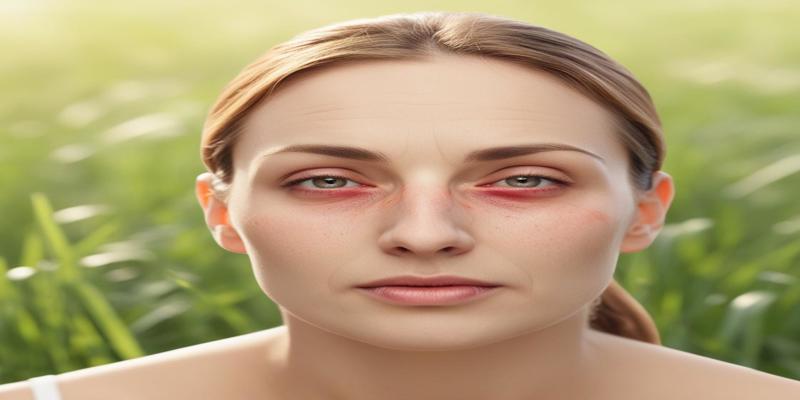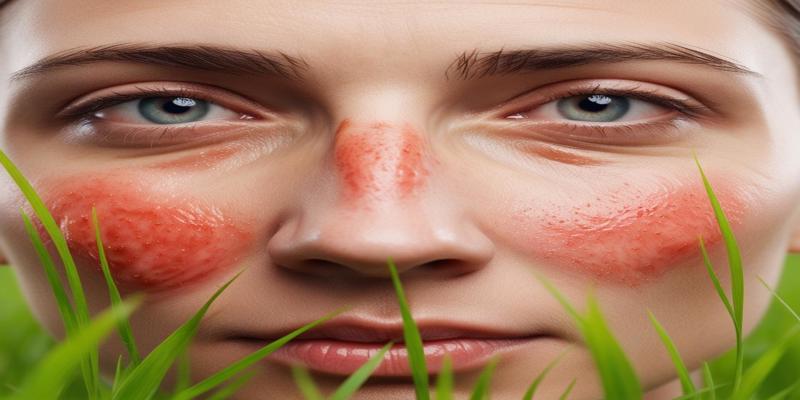Advertisement
You may sneeze and wheeze more than usual as spring and summer arrive. If grass pollen is one of your allergy triggers, you're not alone. Every year, millions of Americans suffer from grass allergies. Knowing how it occurs, recognizing the symptoms, and understanding your options can help you deal more effectively with grass allergies.

Just like humans, dogs may be allergic to numerous substances in their environments, including grass. Allergies to grass among dogs are more common than one might think. Grass allergy occurs when a dog's immune system overreacts due to certain kinds of proteins in the grass pollen. This causes a series of uncomfortable symptoms.
Knowing your dog's signs of a grass allergy can be very important to his well-being. Some possible signs of grass allergies in dogs include:
Grass allergies in dogs are typically seasonal, coinciding with periods of high pollen production. Common grass types that can trigger allergies include:
However, many dogs are allergic to more than one variety of grass, making determining the exact cause difficult. Factors like humidity and wind can worsen allergic reactions because of increased pollen levels in the air.

Grass allergies can manifest in various ways, affecting different body parts. Recognizing these symptoms is crucial for proper diagnosis and treatment. Here are the most common signs to watch out for:
These are all potential respiratory problems one could experience if they have an allergy to grass. It usually starts with sneezing and a runny or stuffy nose. You may also constantly need to clear your throat due to postnasal drip. In more severe cases of grass allergy, wheezing may start, coughing, or even shortness of breath, particularly if someone has asthma.
Your eyes may be susceptible to the allergens in the grass. You may notice itchiness, redness, or watering of the eyes. Some people develop swollen eyelids or dark circles under their eyes, sometimes called "allergic shiners." In severe cases, you could get pink eye or conjunctivitis.
For some people, direct contact with grass can cause skin reactions. You may get an itchy rash or hives on the exposed areas of your skin. Some individuals start to have eczema flare-ups or general skin irritation. Very rarely, you may cause atopic dermatitis, a chronic skin disease that leads to dry and itchy skin.
Interestingly, some grass allergy sufferers may experience oral allergy syndrome. This occurs when your immune system confuses certain fruits or vegetables with grass pollen. Symptoms can include itching or tingling in the mouth, throat, or lips after consuming melons, tomatoes, oranges.
If you feel that your furry companion has allergies to grass, you need to recognize the specific signs and symptoms. Dogs' general signs of grass allergy are uncontrollable scratching, especially on the paws, belly, and ears. You may also see them frequently chewing or licking these areas, resulting in redness, inflammation, or even hair loss. Watch for other signs like sneezing, runny eyes, or a chronic cough.
When these symptoms persist, it's time to consult your veterinarian. They will conduct a thorough physical examination and may recommend specific allergy tests. One standard method is intradermal skin testing, where small amounts of potential allergens are injected under the skin to observe reactions. Blood tests can also be performed to measure antibodies against specific allergens.
In some instances, your vet may recommend an elimination trial. This entails excluding suspected allergens from your dog's environment for some time before gradually bringing them back to isolate what has caused the reaction. During that time, it is crucial to record your dog's symptoms and exposure to grasses or outdoor situations.
It's also worth noting that grass allergies can sometimes be confused with other allergic reactions or skin disorders. Your veterinarian will try to rule out other causes, including food allergies, flea allergies, and environmental irritants. This could also be a time for extra tests or trials to make sure the correct diagnosis is found and that your canine companion receives the proper treatment.
The management of grass allergy is manifold. By integrating several modes of treatment, significant alleviation of symptoms and noticeable improvement of the quality of life can be achieved during grass pollen seasons.
The first line of treatment for grass allergy symptoms typically involves over-the-counter antihistamines. Antihistamines block histamine, a chemical in your body that causes allergic reaction symptoms. Cetirizine, loratadine, and fexofenadine are common choices.
For long-term relief, allergen immunotherapy can be remarkably effective. This treatment exposes your body to small and gradually increasing amounts of grass pollen. There are two main types:
While the latter are not scientifically proven effective as medical treatments, some people find their symptoms relieved with various natural remedies. These include:
Always consult your healthcare provider before trying any treatment, especially natural treatments that can have other medication interactions.
It is essential to avoid grass pollen as much as possible. Consider using air cleaners with a HEPA filter in your home, keeping windows closed during high-pollen days, and showering after spending time outdoors. These simple steps can significantly lessen your contact with allergens and minimize symptoms.
In the end, managing grass allergy is varied in nature. Early recognition of symptoms, avoidance of the trigger factor whenever possible, and cooperation with one's medical professional to establish an effective treatment plan can help minimize the consequences of grass allergy in daily life.
Advertisement

By Elva Flynn/Mar 17, 2025

By Tessa Rodriguez/Mar 16, 2025

By Sean William/Jan 11, 2025

By Pamela Andrew/Mar 17, 2025

By Darnell Malan/Mar 17, 2025

By Paula Miller/Jan 24, 2025

By Celia Kreitner/Jan 23, 2025

By Nancy Miller/Jan 20, 2025

By Mason Garvey/Jan 23, 2025

By Celia Shatzman/Nov 06, 2024

By Isabella Moss/Mar 18, 2025

By Darnell Malan/Feb 28, 2025